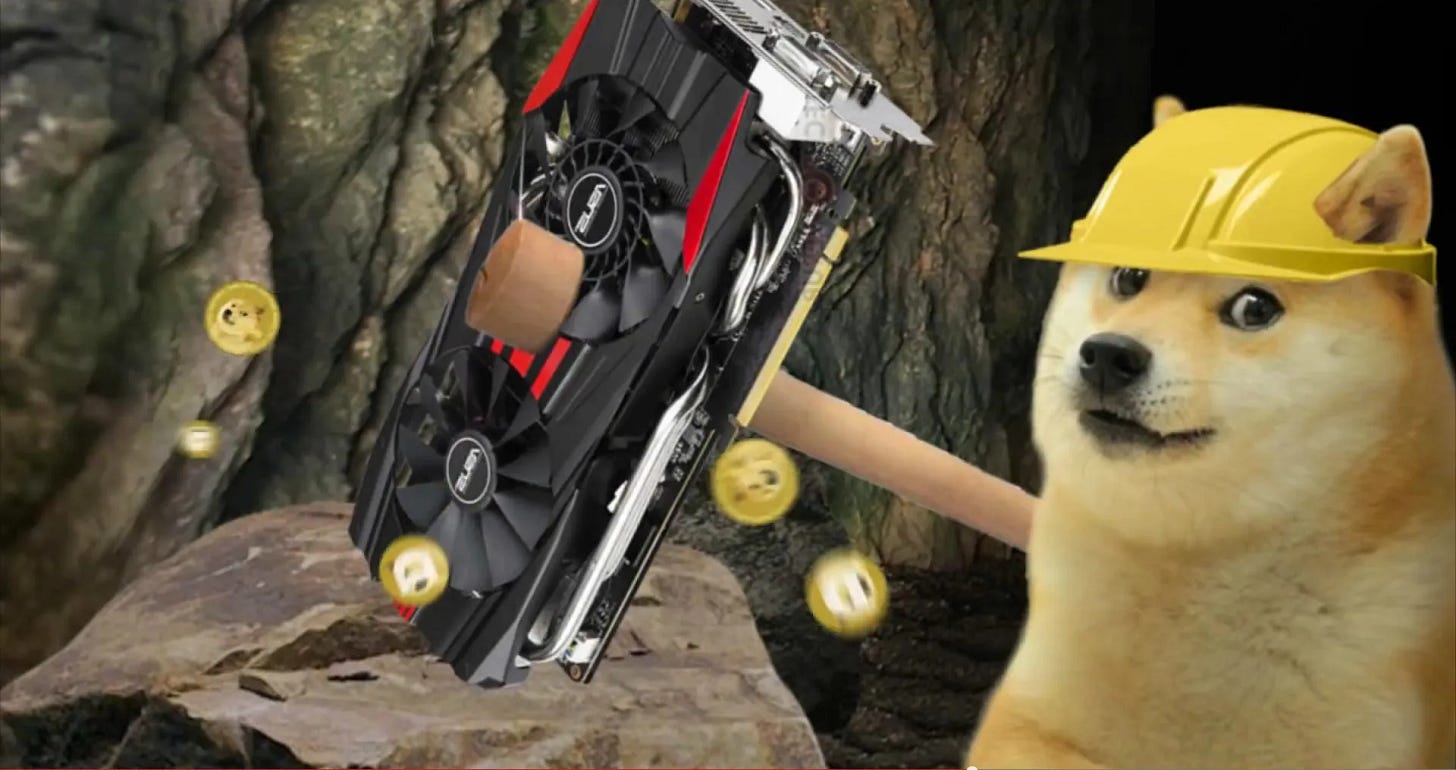Mining on the Dogecoin blockchain, similar to other Proof of Work (PoW) based cryptocurrencies, involves solving complex mathematical puzzles to validate transactions and create new blocks.
Here's an explanation of how mining works on the Dogecoin blockchain, supported by reputable sources:
Mining Nodes:
Miners are specialized nodes in the Dogecoin network that compete to add new blocks to the blockchain. They use computational power to solve mathematical puzzles.
Source: Dogecoin Wiki - Mining https://en.bitcoin.it/wiki/Mining
Transaction Verification:
Transactions are broadcasted to the network. Miners gather these transactions and include them in a candidate block.
Source: Dogecoin GitHub Repository https://github.com/dogecoin/dogecoin
Creating a Block:
Miners group together a set of transactions into a block. This block also includes a special transaction known as the "coinbase transaction," which rewards the miner with newly minted Dogecoins and collected transaction fees.
Proof of Work (PoW):
Miners attempt to find a specific number called a "nonce" that, when combined with the block's data, produces a hash that meets certain criteria (in Dogecoin, the hash must have a specific number of leading zeros).
Difficulty Adjustment:
The network's difficulty level is adjusted regularly to maintain an average block creation time of around one block every minute. If blocks are being mined too quickly, the difficulty increases, and if they are being mined too slowly, the difficulty decreases.
Source: Dogecoin GitHub Repository https://github.com/dogecoin/dogecoin
Consensus Achievement:
The first miner to find a valid nonce and create a valid block broadcasts it to the network.
Verification by Nodes:
Other nodes on the network receive the new block. They verify that the nonce is valid and that the block's transactions are legitimate.
Source: Bitcoin Wiki - Mining https://en.bitcoin.it/wiki/Mining
Block Reward and Transaction Fees:
The successful miner is rewarded with a set amount of Dogecoins (block reward) and can also collect transaction fees from the transactions included in the block.
Longest Chain Rule:
The new block is added to the existing blockchain, becoming the latest block. This chain extension is accepted as the legitimate chain, as per the "longest chain rule."
Source: Bitcoin Wiki - Block Chain https://en.bitcoin.it/wiki/Block_chain
In summary, mining on the Dogecoin blockchain involves a competitive process where miners use computational power to validate transactions, create new blocks, and secure the network. This process is supported by reputable sources from the Dogecoin community and broader cryptocurrency space.




